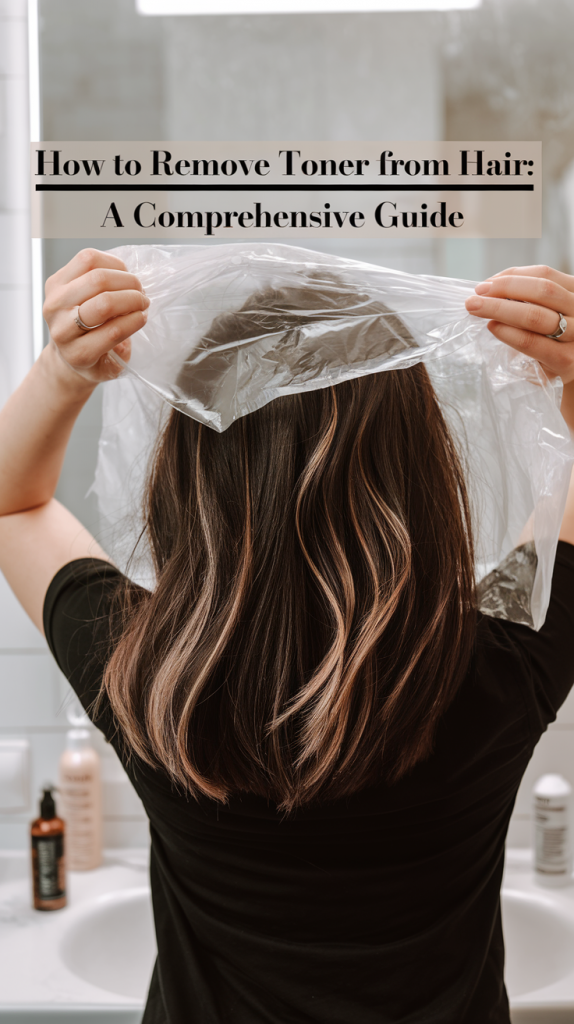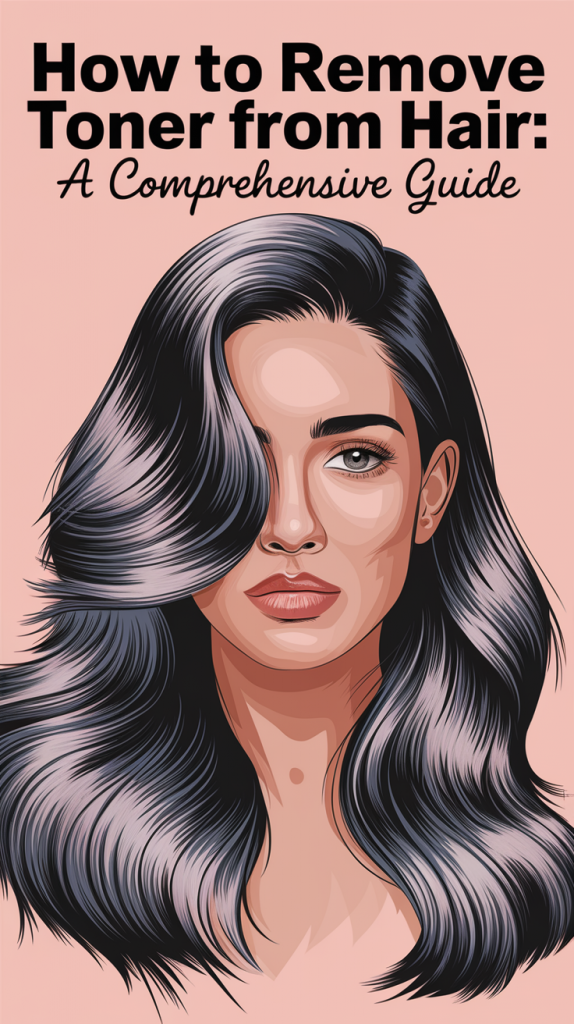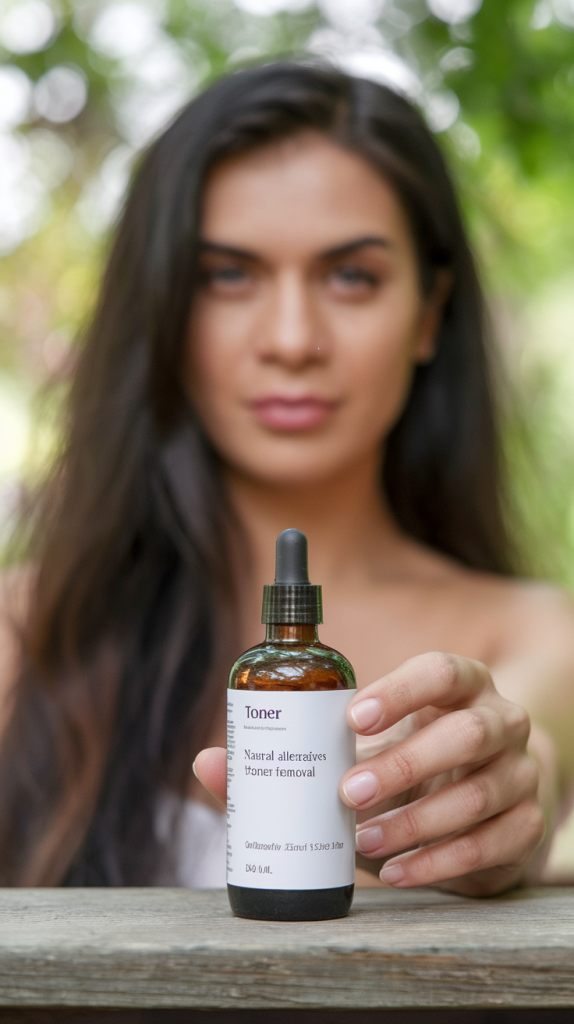How to Remove Toner from Hair: A Comprehensive Guide
Removing toner from hair can be a tricky process, but with the right approach, you can achieve your desired results without compromising the health of your hair. This guide will explore everything you need to know about toner removal, including methods, aftercare, and common pitfalls to avoid. Let’s dive in!

Understanding Hair Toner and Why You Might Want to Remove It
What Is Hair Toner?
Hair toner is a semi-permanent product used to neutralize unwanted undertones in bleached or dyed hair. For example, it can counteract brassy yellows in blondes or enhance cooler shades like ash or platinum. However, toner can sometimes produce unintended results, such as overly cool or uneven tones.
Why Remove Toner?
You might want to remove toner for several reasons:
- The shade is too dark or ashy.
- The toner was applied unevenly.
- You want to return to a warmer or more natural color.
- The toner has faded unevenly over time.
Understanding the toner’s role and how it interacts with your hair’s porosity is crucial before attempting removal.
DIY Methods to Remove Toner from Hair
1. Clarifying Shampoo
Clarifying shampoos are specifically formulated to remove product buildup, making them an effective option for fading toner.
| Steps | Pros | Cons |
|---|---|---|
| Wet hair with warm water | Gentle and easy to use | Can be drying if overused |
| Apply clarifying shampoo | Works gradually | |
| Leave for 5-10 minutes |
- Tip: Follow up with a deep conditioner to replenish moisture.
2. Baking Soda and Shampoo
Baking soda’s mildly abrasive properties help strip toner from hair effectively.
| Steps | Pros | Cons |
| Mix baking soda with shampoo | Quick and effective | May dry out hair |
| Apply to damp hair | Noticeable fading | |
| Rinse after 5 minutes |
- Tip: Deep condition afterward to restore softness.

3. Vitamin C Treatment
The acidity in vitamin C helps break down toner molecules, especially in semi-permanent colors.
- How to Use:
- Crush 5-10 vitamin C tablets into a fine powder.
- Mix with clarifying shampoo to form a paste.
- Apply evenly to damp hair and cover with a shower cap.
- Leave on for 30-60 minutes before rinsing.
- Pros: Effective and relatively gentle.
- Cons: Results may vary depending on hair porosity.
4. Lemon Juice and Conditioner
Lemon juice’s natural acidity can help lighten toner.
- How to Use:
- Mix equal parts lemon juice and conditioner.
- Apply to damp hair and cover with a shower cap.
- Leave on for 20-30 minutes, then rinse thoroughly.
- Pros: Natural and safe for most hair types.
- Cons: Can be slightly drying.
5. Dish Soap
Dish soap’s strong cleansing properties make it a powerful toner remover.
| Steps | Pros | Cons |
| Mix dish soap with shampoo | Very effective for stubborn toner | Harsh on hair |
| Apply to wet hair | ||
| Rinse thoroughly |
6. Professional Color Removers
For a more reliable option, consider using a color remover designed for semi-permanent dyes. These products can safely strip toner without damaging your hair.
- Tip: Follow the product’s instructions carefully for the best results.
Natural Alternatives for Gentle Toner Removal
If you prefer less abrasive methods, try these natural alternatives:
- Chamomile Tea Rinse: Gradually lightens hair and fades toner over time.
- Honey and Cinnamon Mask: A moisturizing option that gently lifts toner while nourishing your hair.
- Apple Cider Vinegar Rinse: Restores pH balance and helps fade toner naturally.

Professional vs. DIY: When to Seek Help
While DIY methods are effective for mild toner removal, there are cases where a professional touch is necessary:
- If your hair is severely over-toned or uneven.
- If you’re dealing with high-contrast colors (e.g., platinum blonde or pastel shades).
- If your hair is already damaged or fragile.
A professional stylist can perform a color correction or mild bleach wash to safely restore your desired shade.
Post-Treatment Hair Care
Removing toner can be harsh on your hair. To maintain its health:
- Deep Conditioning: Use masks or treatments weekly to replenish moisture.
- Hydration Boost: Apply natural oils like coconut or argan oil overnight.
- Avoid Heat Styling: Minimize the use of hot tools to prevent further damage.
- Space Out Color Treatments: Allow your hair time to recover before applying new toner or dye.
Common Mistakes to Avoid
- Overusing Harsh Methods: Excessive use of baking soda, dish soap, or clarifying shampoos can lead to dryness and breakage.
- Skipping Conditioner: Always replenish moisture after attempting toner removal.
- Incompatible Products: Avoid mixing acidic and alkaline treatments (e.g., lemon juice with baking soda).
- Ignoring Hair Type: Consider your hair’s porosity and texture when choosing a removal method.
FAQs
- Can I use dandruff shampoo to remove toner?
Yes, dandruff shampoos contain stronger detergents that can help fade toner. - How long does toner last naturally?
Toner typically fades after 4-5 weeks, depending on washing frequency and hair porosity. - Will swimming in chlorinated water help?
Chlorine can strip toner but may also cause unwanted greenish hues, especially in blonde hair. - What should I do if my hair feels brittle after removal?
Use a deep conditioner or hydrating mask and avoid heat styling until your hair recovers. - Can I reapply toner immediately after removal?
It’s best to wait at least two weeks and ensure your hair is in good condition before reapplying toner. - Is toner removal safe for all hair types?
Yes, but certain methods may need adjustments for textured, curly, or chemically treated hair.
Conclusion
By understanding your hair’s needs and following the right methods, you can effectively remove toner while keeping your hair healthy and vibrant. If you’re unsure, consult a professional to achieve the best results.
